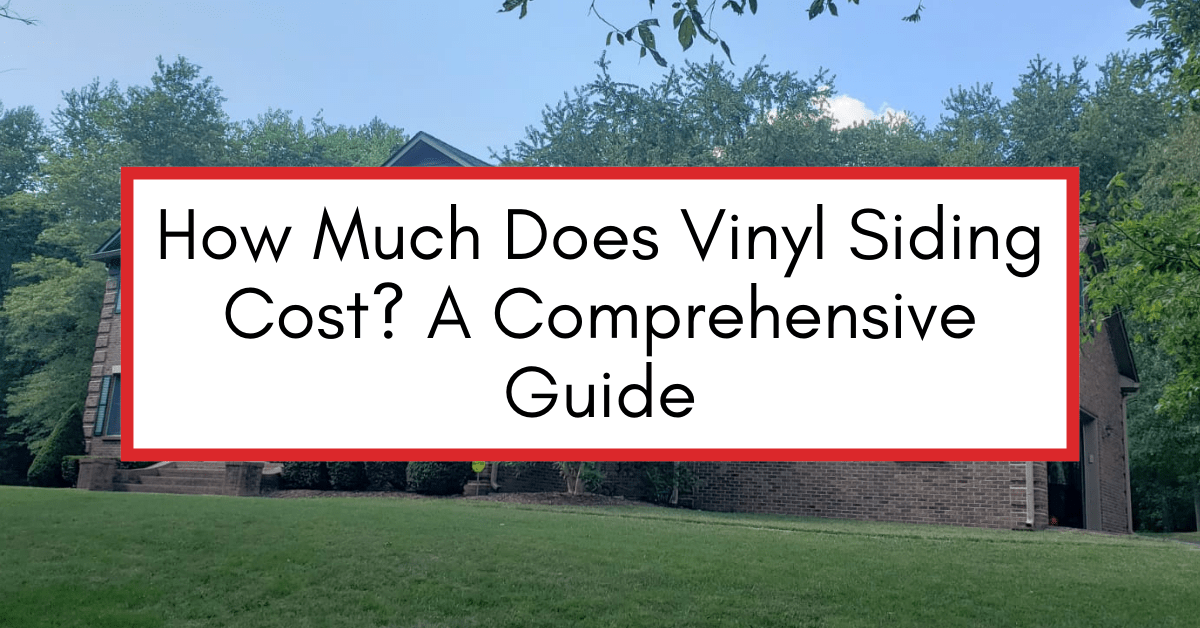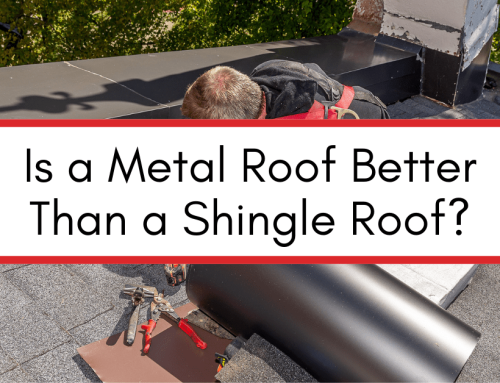Vinyl siding is a popular choice among homeowners when it comes to exterior cladding. Its durability, low maintenance requirements, and wide range of color options make it an attractive option for many homeowners. Naturally, the first question on most homeowners minds when tackling a siding project is “how much is this going to cost”?
At AIC Roofing & Construction we’ve helped thousands of Lexington, Louisville and Cincinnati homeowners navigate their siding replacements. We believe it’s important to be transparent about durability, energy efficiency and cost when it comes to your new siding. In this comprehensive guide, we will explore the factors that influence the cost of vinyl siding, average prices, and how it compares to other siding materials. Additionally, we will provide tips on how to save on vinyl siding costs.
Understanding Vinyl Siding
Vinyl siding is a type of exterior cladding material that is used on homes and businesses. It is made from polyvinyl chloride (PVC) resin and is available in various profiles, including horizontal, vertical, and shakes.
One interesting fact about vinyl siding is that it was first introduced in the 1950s as an alternative to aluminum siding. Its popularity grew rapidly due to its versatility and ease of installation. Today, vinyl siding is one of the most commonly used siding materials in the United States.
In the Central Kentucky and Cincinnati areas, homeowners can expect to pay $500-$700 per 100 square feet for mid-grade vinyl siding.
Benefits of Vinyl Siding
There are numerous benefits to choosing vinyl siding for your home. Firstly, vinyl siding is affordable compared to other siding materials, making it a cost-effective choice. Vinyl siding does require more maintenance, when compared to competitors like cellular composite and fiber cement.
Another advantage of vinyl siding is the amount of design options available, in terms of colors and styles. It is available in a wide range of colors, from traditional neutrals to bold hues, allowing homeowners to customize the look of their homes.
Factors Influencing the Cost of Vinyl Siding
Material Quality and Type
The quality and type of vinyl siding you choose will significantly impact the cost. Higher-quality vinyl siding with enhanced durability and insulation properties may come at a higher price. Additionally, certain specialized vinyl siding types, such as insulated or designer options, may have a higher cost per square foot. It’s important to consider the long-term benefits of investing in high-quality vinyl siding, as it can potentially save you money on maintenance, early replacement costs and energy bills in the future.
Furthermore, when selecting the material for your vinyl siding, take into account factors such as color retention, resistance to impact and weathering, and ease of maintenance. These characteristics can affect the overall cost of the siding and its lifespan, making it crucial to choose a material that aligns with your budget and maintenance preferences.
Size of the House
The size of your house will also play a role in determining the cost of vinyl siding. Larger homes will require more material, resulting in higher overall costs. It’s essential to accurately measure the square footage of your home and consider any additional features, such as gables or dormers, that may impact the amount of siding needed.
Moreover, the architectural style of your home can influence the complexity of the siding installation, potentially affecting labor costs. Homes with intricate designs or multiple stories may require more time and expertise to install the vinyl siding properly, leading to higher labor expenses.
Comparing Vinyl Siding to Other Materials
Vinyl Siding vs. James Hardie Fiber Cement
When comparing vinyl siding to James Hardie fiber cement siding, several key factors come into play. Vinyl siding is often praised for its lower initial cost and quicker installation process compared to Hardie board. However, James Hardie fiber cement siding boasts superior durability, being up to 5 times thicker than vinyl and offering excellent resistance to various elements such as wind, moisture, and insects. While vinyl siding may be easier on the wallet initially, James Hardie fiber cement siding proves to be a longer-lasting and more robust investment, standing strong against weather conditions and providing a more sustainable option due to its natural composition. In the debate of vinyl vs fiber cement siding, the durability and longevity of James Hardie siding make it a compelling choice for homeowners looking for a high-quality and resilient siding option.
Vinyl Siding vs. Cellular Composite Siding
When comparing vinyl siding to cellular composite siding, several distinct differences emerge. Vinyl siding is known for its affordability and ease of installation, making it a popular choice among homeowners. However, cellular composite siding offers a step up in terms of durability and maintenance. With its interlocking joints and resistance to mold, moisture, and pests, composite siding stands out as a low-maintenance and long-lasting option. Additionally, composite construction as an unfinished PVC product painted with a kynar finish provides excellent UV protection, minimizing fading over time. While vinyl siding may be cost-effective initially, Cellular composite siding presents a compelling alternative for those seeking a higher level of durability, aesthetic appeal, and long-term value for their homes
Final Thoughts
According to the National Association of Realtors Research Group’s 2022 Remodeling Impact Report, fiber cement siding has an 86% cost recovery and vinyl siding has an 82% cost recovery! That means on average, homeowners recoup at least 80% of the cost of their fiber cement or vinyl siding project when the time comes to sell their home. It’s important to treat your most precious asset with the care it deserves.
Choosing new siding for your home can feel like an overwhelming process. It’s important to research the features, longevity, and cost of each siding product to ensure you choose a product you will be thrilled with for years to come. After reading this article, we hope you’re more knowledgeable about the differences between vinyl and fiber cement siding, and which is best for your home.
Whether you’re just beginning your siding research or are ready to speak with a contractor, our Learning Center has answers about your project ranging from how long it will take to side your house to in-depth comparisons and reviews.
Just as important as choosing the right siding, is choosing the right contractor. AIC Roofing and Construction has been helping homeowners since 2003. We’re proud of the best-in-class reputation we’ve earned with homeowners.
If you’re ready to get a free estimate on your siding project, contact us today!
3-tab attics barns chimney choosing a contractor commercial cost curb appeal DIY estimate financing flashing flat roof GAF glossary gutter replacement gutters gutter size gutter system ice dams inspections insurance missing shingles roof design roofing materials roofing system roof leak roof maintenance roof materials roof repair roof replacement roof shapes roof types shingle ratings shingles siding siding materials siding replacement skylights storm damage underlayment ventilation warranty winter







